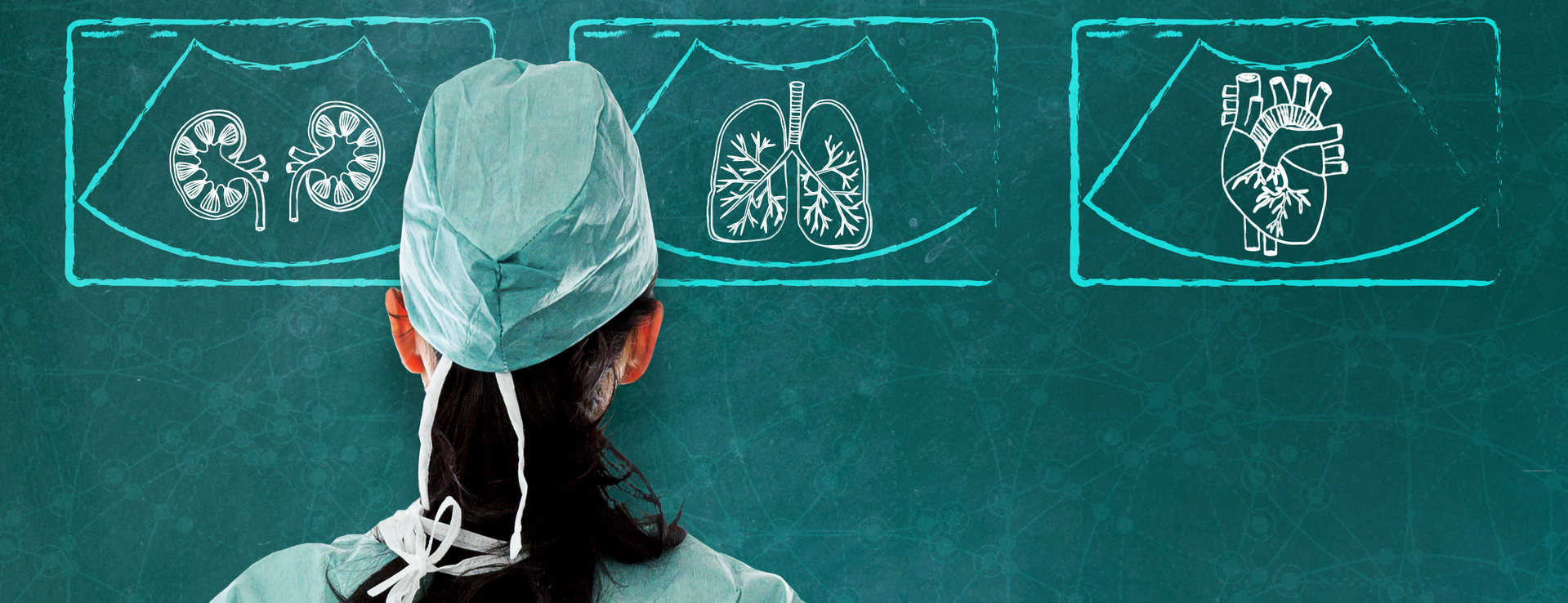The role of the anaesthesiologist is evolving. With hospitals seeking innovative ways to streamline patient care and improve outcomes, anaesthesiologists are increasingly expected to provide patient care beyond general anaesthesia and nerve blocks. Perioperative Medicine extends past the operating room and well into recovery. Anaesthesiologists are taking on new roles before, during, and after surgery.
Anaesthesiologists are learning new skills, like diagnostic point-of-care ultrasound. Using POCUS to scan perioperative care patients for unknown conditions or complications is actually a time-saving measure that can significantly improve patient outcomes and shorten hospital length of stay.
Common perioperative ultrasound applications include:
- Hemodynamic monitoring & volume status management
- Identification of pericardial effusion or tamponade
- Detection of cardiopulmonary pathology including pneumothorax
- ET Tube Placement/airway management
- Focused Assessment of Transthoracic Echocardiography (FATE exam)
- Assessment of gastric contents
- Evaluation of hemodynamic instability (FAST exam)
The following is a list of Sonosite ultrasound machines designed with the anaesthesiologist in mind:
- Sonosite X-Porte Ultrasound System Sonosite X-Porte features outstanding image quality, advanced cardiac calculations, and includes educational modules that are built in to the machine, so that you can learn additional ultrasound scans as you work. Durable glass-covered system is outstandingly easy to clean.
- Sonosite PX Ultrasound System Sonosite PX offers our most advanced image clarity for confidence when diagnosing patients. The new interface combines touch and physical controls for improved efficiency, while the adaptable horizontal-to-vertical work surface allows for optimal bedside ergonomics.
Related Articles
- 10 Important Applications of Point-of-Care Ultrasound in Paediatric Emergency Medicine
- Ultrasound-Guided Nerve Block, an ED Opioid Alternative
- Need to Purchase Imageing Equipment? Consider All Costs of Ownership.
- Ultrasound-Guided Vascular Access Programme Saves St. Joseph's $3.5 Million
- Six Secrets of Implementing Ultrasound in Paediatric Emergency Medicine
- MedPAC and What We Can Learn Regarding the Use of Ultrasound to Guide Procedures
- Six Steps to Implement Bedside Ultrasonography in Critical Care
- Ultrasound-Guided Procedures: Financial and Safety Benefits
- Smarter Use of Imageing Technology: Reduce Errors Costs
- $330 Million Risk: What Boards Should Know
- A Proposed Payment Differential Policy that Negatively Impacts Hospitals and Potentially Patient Care
- Ultrasound Guidance at the Point of Care
- Why the ultrasound-guided approach to central vein catheterization is replacing the landmark method.
- CT Dose in Children
- Emergency Ultrasound at the Bedside: Not Just FAST A Cost-Effective Technology to Reduce Medical Errors and Improve Safety
- Improving Safety and Quality with Best Practises: Focus on Central Venous Access
- Imageing Economics
- Our Journey to Zero Patient Harm
- Pathways That Deliver Increased Physician Efficiency And Improved Patient Satisfaction


